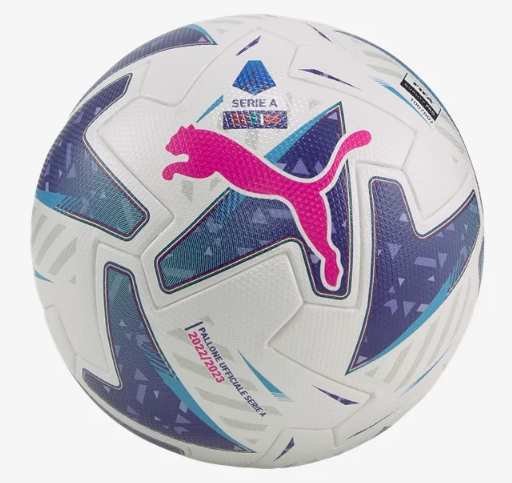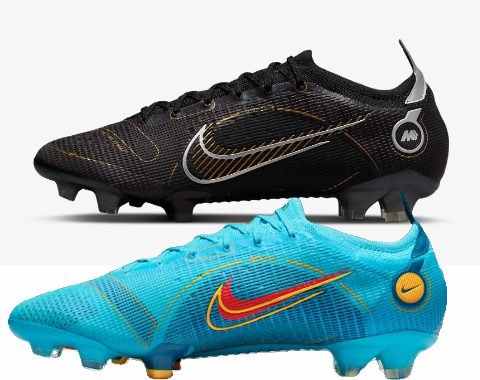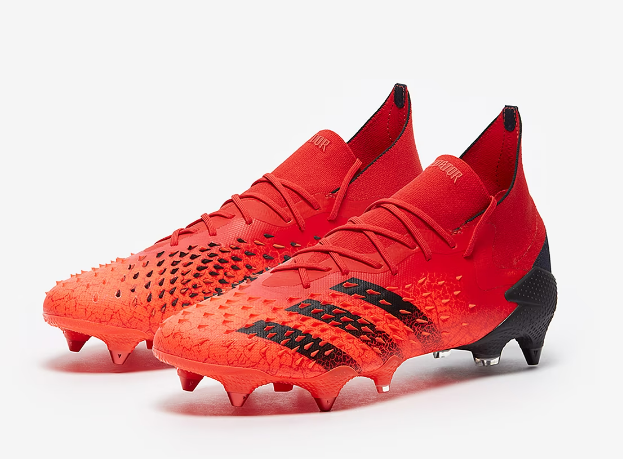Soccer Ball Guide: All You Need to Know
Soccer is a beautiful game loved by millions worldwide, and at the heart of every match is the soccer ball. But have you ever wondered what makes the difference between a standard practice ball and the elite-grade balls used in professional leagues? In this article, we'll explore the science behind soccer balls, delve into the different tiers, take a look at the balls used in the top 5 European leagues, and guide you through the process of choosing the perfect soccer ball to meet your needs. Let’s dive in.
The Science Behind Soccer Balls
Soccer, the world's most popular sport, enchants millions with its dynamism and fluidity. While we often admire the players and their skills, the unsung hero of every match is the soccer ball. The performance of this simple piece of equipment can dramatically influence the outcome of the game. But have you ever pondered the science behind soccer balls? Let's delve into the complexities of soccer ball design and understand what distinguishes different types.
Understanding the Basics
Before diving into the Sceience, let's familiarize ourselves with the fundamental elements of a soccer ball. Soccer balls comprise four key components: the bladder, the lining, the stitching, and the outer cover. The bladder is typically made of latex or butyl and holds air. The lining sits between the bladder and the cover, providing structure and shape retention. The outer cover, made of synthetic leather or PVC, is stitched together and influences the ball's control and durability.
Ball Components
The Physics and Materials: Core Elements of Soccer Balls
Soccer ball design involves an intricate interplay of physics and material science. The aerodynamic properties of a soccer ball determine its trajectory and speed in the air. This largely depends on its shape, the materials used, the arrangement of its panels, and its surface roughness.
Most modern soccer balls are spherical and made of durable, water-resistant materials like polyurethane (PU) or polyvinyl chloride (PVC). PU soccer balls are typically of higher quality, offering better touch and control. They are often used in professional matches and official tournaments. In contrast, PVC soccer balls are more durable and affordable, making them a popular choice for practice sessions and recreational use.
Beyond the Round Shape: Panel Configuration
The arrangement and shape of the panels on a soccer ball can greatly influence its flight. Traditional soccer balls, like the ones used in the early FIFA World Cup tournaments, had 32 panels - 20 hexagonal and 12 pentagonal - arranged in a truncated icosahedron design. This configuration ensured the ball was as round as possible and behaved predictably in flight.
However, modern soccer balls often veer from this traditional design in search of better performance. The Adidas Brazuca, used in the 2014 World Cup, had just six panels, while the Adidas Telstar 18, used in the 2018 World Cup, had only eight. These newer designs are aimed at improving the ball's stability, predictability, and aerodynamics.
Understanding Soccer Ball Inflation
The proper inflation for a regulation size soccer ball (Size 5) is typically 13 psi (pounds per square inch), but can vary depending on the specific requirements of the ball manufacturer. The manufacturer's recommended pressure range, which is usually printed somewhere on the ball. However, if this information is unavailable, a good rule of thumb is to inflate a regulation size soccer ball (Size 5) to about 13 psi.
Underinflated balls can be easier to control and cause less potential for injury, but they also don't bounce as well and tend not to travel as far. Overinflated balls, on the other hand, can be harder and might bounce unpredictably, increasing the risk of injury.
Using a good quality pump with a built-in pressure gauge can help ensure that your soccer ball is properly inflated.
The ball should be firm but not hard. If you can easily deform the ball with your hands or it feels soft when you kick it, it's likely under-inflated. On the other hand, if the ball feels like a rock and bounces too much, it's probably over-inflated.
Remember, a properly inflated ball provides the best combination of performance and safety. It's always a good idea to check the ball's inflation before each game or practice session.
Different Tiers of Soccer Balls
Despite their seemingly uniform appearance, not all soccer balls are created equal. Depending on the materials used, the quality of construction, and the intended purpose, soccer balls are categorized into different tiers. In this section we will guide you through these various tiers, helping you understand the critical differences and their impact on the game, and give you a rough idea about cost. Of course, note that prices can vary significantly based on brand, location, retailer, and the specific model of the ball.
Tier 1: Practice Soccer Balls
Practice soccer balls are designed to withstand the rigors of regular use. They are often constructed from robust materials like PVC (polyvinyl chloride), which provide durability at a cost-effective price point. Despite being harder and sometimes less responsive to touch than their higher-tier counterparts, these balls are perfect for everyday training and recreational play.
These are the most affordable option and are designed for durability and repeated use. The price generally ranges from $10 to $30.
Tier 2: Training Match Soccer Balls
A step above practice balls, training match balls are designed to mimic the feel and performance of more advanced balls, while still retaining a focus on durability. They are typically made from a composite of PVC and PU (polyurethane) to enhance their feel and responsiveness. These balls are an excellent choice for more competitive training sessions or amateur matches.
A step up from practice balls, these offer a better feel and performance. You can expect to pay anywhere from $20 to $50.
Tier 3: Professional Match Soccer Balls
Professional match soccer balls are of high quality, designed to perform consistently in competitive environments. They are often made entirely of PU, providing a softer touch and more accurate flight than lower-tier balls. These balls usually feature advanced construction techniques, such as thermal bonding or hand-stitching, to enhance their durability and maintain their shape over time. Professional match balls are typically used in league matches at various competitive levels.
These are higher quality and used in competitive matches. They're usually priced between $40 and $100.
Tier 4: Official Match Soccer Balls
At the pinnacle of soccer ball tiers are the official match balls. These are the balls you'll see being used in the highest professional leagues and tournaments worldwide. Official match balls meet stringent FIFA standards for weight, size, rebound, and water absorption. They feature state-of-the-art materials and design technologies to deliver superior performance, consistency, and durability. Manufacturers often introduce unique designs for official match balls used in major tournaments like the FIFA World Cup or UEFA Champions League.
These are the top-tier, used in professional leagues and tournaments. They're designed for superior performance and durability, and their price reflects this, typically ranging from $80 to over $150.
Balls Used by the Top 5 European Leagues
The official match balls in professional leagues aren't chosen lightly; they're crafted with precision, designed to deliver top-notch performance in the most competitive environments. In this article, we take a close look at the official match balls used in the top five European leagues: Premier League, La Liga, Bundesliga, Serie A, and Ligue 1.
Premier League: Nike Flight
In the English Premier League, the game revolves around the Nike Flight. Nike introduced the Flight ball with promises of revolutionary ball flight, claiming it to be 30% truer in flight than its predecessor, the Nike Merlin. This innovative ball utilizes Aerowsculpt technology, designed to optimize aerodynamics, and it has a grooved paneling system to improve flight stability.
La Liga: Puma LaLiga 1 Accelerate
Spain's top-tier league, La Liga, is graced by the Puma LaLiga 1 Accelerate. This ball features an 18-panel configuration with a thermally bonded construction, offering reduced water absorption and increased durability. It's known for its excellent touch, control, and a predictable flight path, enhancing the quality of play on the pitch.
Bundesliga: Derbystar Brillant APS
In the German Bundesliga, Derbystar Brillant APS holds the spotlight. Derbystar, a subsidiary of Select Sport, is known for its high-quality hand-stitched balls. The Brillant APS features a 32-panel design, a durable PU outer material, and a patented zero-wing latex bladder for an optimal round shape and balanced flight.
Italy Serie A: Puma Orbita
For Italy's Serie A, the Puma Orbita is the official ball for the Serie A 22/23 season. Celebrating the rich cultural roots of Italy, the vibrant design of this ball is inspired by the iconic Serie A logo, sets it apart on the pitch. But the Puma Orbita is not just about aesthetics. Crafted for excellence in the field, this high-end match ball is designed for perfect flight. The 12-panel design ensures balanced weight, while reduced seams contribute to consistent flight behavior.
French Ligue 1: Uhlsport Elysia
France's Ligue 1 utilizes the Uhlsport Elysia as its official match ball. Named after the Champs-Élysées, this ball is designed to reflect the dynamism and elegance of French football. With its thermally bonded panels and advanced bladder design, the Elysia promises optimal roundness, extremely low water absorption, and a reliable flight path.
Choosing the Right Soccer Ball
By now we already know a lot about soccer balls, from understanding the basics of ball construction to the science behind ball flight. Now, selecting the right soccer ball ultimately depends on your specific needs. If you're an amateur player or a coach looking for durable balls for regular practice sessions, practice or training match balls will be the most suitable. For more competitive play or professional training sessions, professional match balls offer enhanced performance. However, if you're aiming for the stars and want the best of the best, or you're a serious collector, official match balls are the way to go.
Size Matters
Soccer balls come in different sizes, usually ranging from size 1 to size 5. Size 5, the largest, is the professional standard used by players aged 13 and above. Size 4 is suitable for players aged 8-12, while Size 3, ideal for players aged 5-8, is often used for skills development. Size 2 and Size 1 balls are smaller, used primarily for ball skills training or as souvenirs.
The Right Tier for Your Needs
Soccer balls also come in different tiers – practice, training match, professional match, and official match balls. Practice and training match balls are designed for durabilit y and are perfect for routine use. Professional match balls, used in league matches, offer higher performance and are typically made of better-quality materials. Official match balls, used in professional leagues and tournaments, meet all FIFA standards and offer the highest level of performance.
Your Playing Surface
The surface you play on can influence your choice of soccer ball. For example, if you frequently play on rough concrete surfaces, you'll want a ball made from extra durable materials like rubber or extra-thick synthetic leather. For indoor games, you might want an indoor ball, designed to be less bouncy and better suited to the faster pace of indoor play.
Budget
While everyone wants the best quality, your budget might limit your options. Practice and training balls are more affordable and offer good durability, making them suitable for beginners or casual players. Professional match balls and official match balls, while pricier, deliver better performance and are crafted for serious competitive play.
To recap general costs:
Practice Soccer Balls: These are the most affordable option and are designed for durability and repeated use. The price generally ranges from $10 to $30.
Training Match Soccer Balls: A step up from practice balls, these offer a better feel and performance. You can expect to pay anywhere from $20 to $50.
Professional Match Soccer Balls: These are higher quality and used in competitive matches. They're usually priced between $40 and $100.
Official Match Soccer Balls: These are the top-tier, used in professional leagues and tournaments. They're designed for superior performance and durability, and their price reflects this, typically ranging from $80 to over $150.
The Bottom Line
Understanding the science behind soccer balls can enhance your appreciation for the beautiful game, whether you're a player or a fan. From the materials and design to the different tiers and the top choices in the market, every aspect plays a crucial role in how a soccer ball performs on the pitch. So, next time you're in the market for a new soccer ball, consider these points and make the best choice for your soccer needs.























